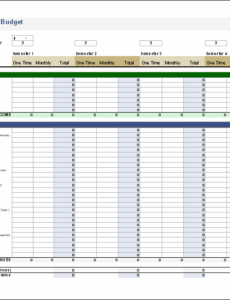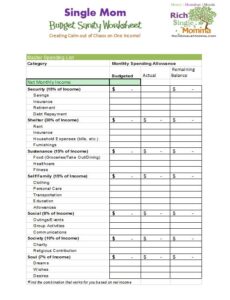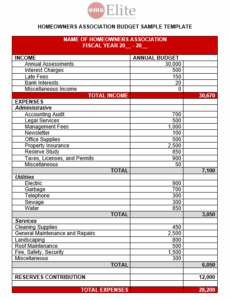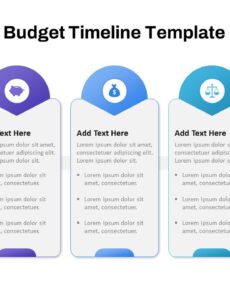Embarking on a higher education journey while simultaneously raising children presents a unique set of challenges. It’s a demanding path that requires immense dedication, resourcefulness, and, perhaps most crucially, impeccable financial planning. Balancing tuition fees, childcare costs, housing, food, and everyday family expenses alongside academic pressures can feel like an impossible juggling act. Many student parents find themselves navigating this complex financial landscape with little guidance, often leading to increased stress and potential academic or financial setbacks.
However, with a well-structured approach, financial stability is not just an aspiration but an achievable reality. A clear financial plan serves as your roadmap, helping you allocate resources wisely, anticipate future needs, and mitigate unexpected financial burdens. This article is designed to illuminate the path to financial clarity, offering insights and actionable steps to help college students who are also parents manage their money effectively, ensuring both their academic success and their family’s well-being.
The Unique Financial Balancing Act for Student Parents
Being a student parent means confronting a dual set of financial responsibilities that most traditional students—or even non-student parents—don’t face. On one hand, there are the typical student expenses: tuition, fees, textbooks, and potentially living costs if not residing on campus. These alone can be substantial. On the other hand, there are the continuous, often escalating, costs associated with raising children, including childcare, diapers, formula, clothing, healthcare, and educational supplies for their kids.
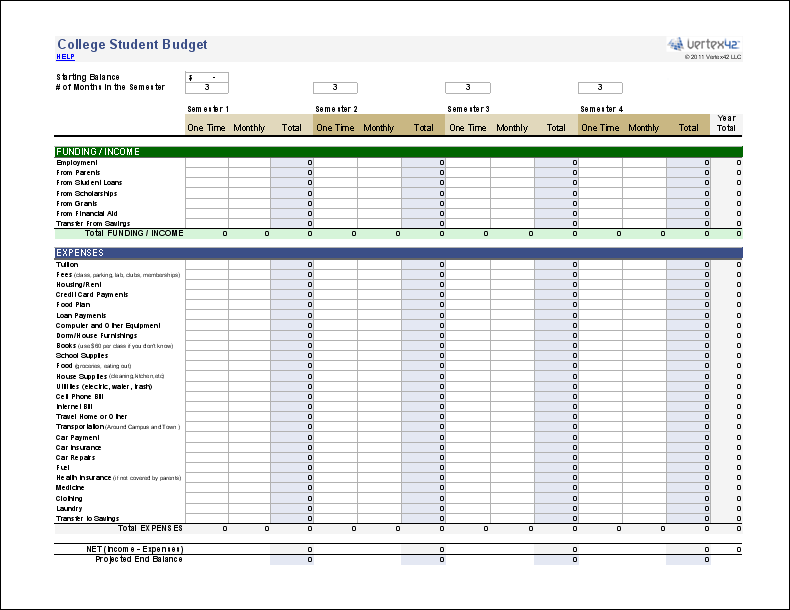
The combination of these financial demands is often compounded by limited income. Many student parents work part-time, if at all, to accommodate their class schedules and childcare responsibilities, which means a tighter budget for everything. Time, a precious commodity, is stretched thin between coursework, studying, working, and parenting, leaving little room for extensive financial research or complex money management. This intricate web of obligations underscores the critical need for a clear, organized financial framework that can adapt to fluctuating incomes and expenses.
Why a Dedicated Financial Plan is Non-Negotiable
Creating a robust financial plan for college students with children isn’t just about tracking where your money goes; it’s about gaining control, reducing stress, and building a foundation for future success. Without a defined spending plan, it’s easy for expenses to spiral, leading to reliance on high-interest credit cards, missed payments, or an inability to cover essential family needs. A dedicated financial strategy provides clarity, helping you see exactly where your money comes from and where it needs to go, allowing for informed decision-making.
Beyond mere tracking, a thoughtfully constructed financial blueprint empowers you to set and achieve financial goals, whether that’s saving for an emergency fund, minimizing student loan debt, or planning for your child’s future. It acts as a proactive tool, enabling you to identify potential shortfalls before they become crises and to allocate funds strategically towards priorities like childcare or educational materials. Ultimately, a strong financial plan for student families is an investment in both your academic career and your family’s security.
Key Components of a Robust Spending Plan
A comprehensive financial plan for college student parents needs to be tailored to their specific circumstances, accounting for both academic and family needs. It’s not a one-size-fits-all solution, but certain foundational elements must always be included. Understanding these components is the first step toward building an effective money management tool that truly works for you and your family.
Here are the essential elements your personalized financial framework should encompass:
- Income Sources:
- Financial aid: Grants, scholarships, federal student loans.
- Work-study programs: Earnings from campus employment.
- Part-time/Full-time employment: Wages from external jobs.
- Child support: If applicable.
- Government benefits: SNAP, TANF, childcare subsidies, housing assistance.
- Other income: Gifts, tax refunds, savings, or parental contributions.
- Fixed Expenses: These are costs that typically remain the same each month.
- Rent/Mortgage: Housing payments.
- Tuition/Fees: Monthly or per-semester breakdown.
- Loan payments: Student loan, car loan, personal loan payments.
- Insurance premiums: Health, car, renter’s insurance.
- Childcare costs: Daycare, after-school programs.
- Subscriptions: Streaming services, internet, phone bills.
- Variable Expenses: These fluctuate month-to-month and require careful monitoring.
- Groceries: Food for the family.
- Utilities: Electricity, gas, water (can sometimes be fixed, sometimes variable).
- Transportation: Gas, public transit fares, car maintenance.
- Personal care: Toiletries, haircuts.
- Child-related expenses: Diapers, clothing, toys, school supplies for children.
- Medical/Dental: Co-pays, prescriptions.
- Entertainment/Miscellaneous: Dining out, movies, unforeseen small purchases.
- Savings Goals:
- Emergency fund: A crucial buffer for unexpected events.
- Future education: For your children or continued studies.
- Debt repayment: Beyond minimum payments.
Building Your Personalized Financial Framework
Once you understand the key components, the next step is to actually construct your own spending plan. This doesn’t require a finance degree; just a commitment to tracking and adjusting. Start by gathering all your financial statements: bank statements, pay stubs, student aid letters, and bills. This will give you a clear picture of your actual income and expenses over the past few months.
Begin by listing all your income sources for a typical month. Then, itemize your fixed expenses. These are usually easy to pinpoint. The trickier part is estimating variable expenses. Review past bank and credit card statements to get an average for categories like groceries, transportation, and personal care. Don’t forget those less frequent but significant expenses, like textbook purchases or annual registration fees; divide them by 12 to allocate a monthly amount. The goal is for your total income to exceed your total expenses, leaving room for savings or debt repayment. If it doesn’t, you know exactly where adjustments need to be made.
Strategies for Optimizing Your Student Parent Budget
Creating a financial blueprint is the first step, but optimizing it is an ongoing process that requires active participation and smart strategies. For student parents, every dollar counts, and finding ways to stretch your resources can significantly impact your financial well-being and reduce stress. There are numerous approaches you can take to make your spending plan more effective and resilient.
Consider these strategies to enhance your financial framework:
- Track Everything Religiously: Use an app, a spreadsheet, or a notebook to record every dollar spent. This real-time awareness helps prevent overspending in variable categories.
- Cut Variable Costs Smartly: Look for areas where you can reduce spending without significantly impacting your quality of life. This could mean meal prepping to save on groceries, utilizing campus resources for entertainment, or seeking out free community events.
- Leverage Student Discounts: Many businesses offer discounts for students. Always ask if one is available, from software to transportation.
- Explore Childcare Subsidies and Campus Resources: Many colleges offer on-campus childcare at reduced rates or can connect you with local subsidies. Don’t leave money on the table.
- Automate Savings: Set up automatic transfers from your checking to your savings account each payday, even if it’s a small amount. "Pay yourself first" is a powerful principle.
- Review and Adjust Regularly: Your income and expenses aren’t static. Life as a student parent changes, so revisit your spending plan monthly or quarterly to ensure it still accurately reflects your financial reality and goals.
- Seek Financial Counseling: Many universities offer free financial counseling services for students. These experts can help you fine-tune your financial strategy, navigate financial aid, and explore debt management options.
Leveraging Resources and Support for Student Parents
You don’t have to navigate the financial complexities of being a student parent alone. Universities and external organizations offer a wealth of resources designed to support students with children. Proactively seeking out these forms of assistance can significantly alleviate financial pressure and free up resources for other critical needs. Understanding the landscape of available support is a vital part of a comprehensive financial strategy for college parents.
Start by exploring your university’s financial aid office. They can provide information on grants, scholarships, and specific financial aid packages tailored for student parents. Many institutions also have dedicated student parent resource centers that offer childcare subsidies, housing assistance, food pantries, and even emergency funds. Don’t overlook federal and state programs like the Pell Grant, which is need-based, or Supplemental Nutrition Assistance Program (SNAP) benefits, which can help with grocery costs. Local community organizations often provide free or low-cost resources for families, including clothing drives, school supply giveaways, and parenting support groups. Every bit of assistance you can secure helps in strengthening your overall financial position and ensures you can focus more on your studies and family.
Frequently Asked Questions
How often should I review my financial plan?
It’s advisable to review your spending plan at least once a month. This allows you to track your spending accurately, make necessary adjustments as your income or expenses change, and stay on course with your financial goals. Quarterly deep dives are also beneficial for reassessing long-term objectives.
What if my income is irregular as a student parent?
If your income fluctuates, focus on tracking your expenses meticulously. On higher-income months, prioritize setting aside funds for a buffer or emergency savings to cover lower-income periods. You might also consider averaging your income over several months to create a more realistic monthly budget expectation.
Should I include my student loans in my monthly budget?
While federal student loans often have a grace period before repayment begins, it’s wise to account for future loan payments in your long-term financial planning. If you’re taking out private loans, or if you’re making interest-only payments on federal loans during school, these payments should be included as fixed expenses in your current budget.
How can I save money on childcare?
Explore all available options: university-subsidized childcare, federal and state childcare assistance programs, in-home care swaps with trusted friends or family, or even considering flexible class schedules that align with a partner’s work hours or your own availability for childcare.
What’s the most important thing to focus on with a tight budget?
Prioritize essential needs first: housing, food, and childcare. Once these are covered, allocate funds to tuition and academic supplies. Building an emergency fund, even a small one, should be a strong secondary priority to provide a safety net against unexpected expenses.
Navigating the dual roles of college student and parent is undeniably challenging, but it is also incredibly rewarding. A well-crafted and diligently followed spending plan is not merely a financial tool; it’s a foundation for success, a stress-reducer, and a pathway to achieving your academic and family aspirations. It empowers you to make informed decisions, identify opportunities for savings, and allocate resources where they matter most, ensuring both your education and your children’s well-being are prioritized.
Embrace the power of proactive financial management. By taking the time to understand your financial landscape, build a personalized framework, and continuously optimize it, you are not just managing money; you are investing in a more stable, less stressful, and ultimately more fulfilling future for yourself and your family. Start today—your future self, and your children, will thank you for it.
